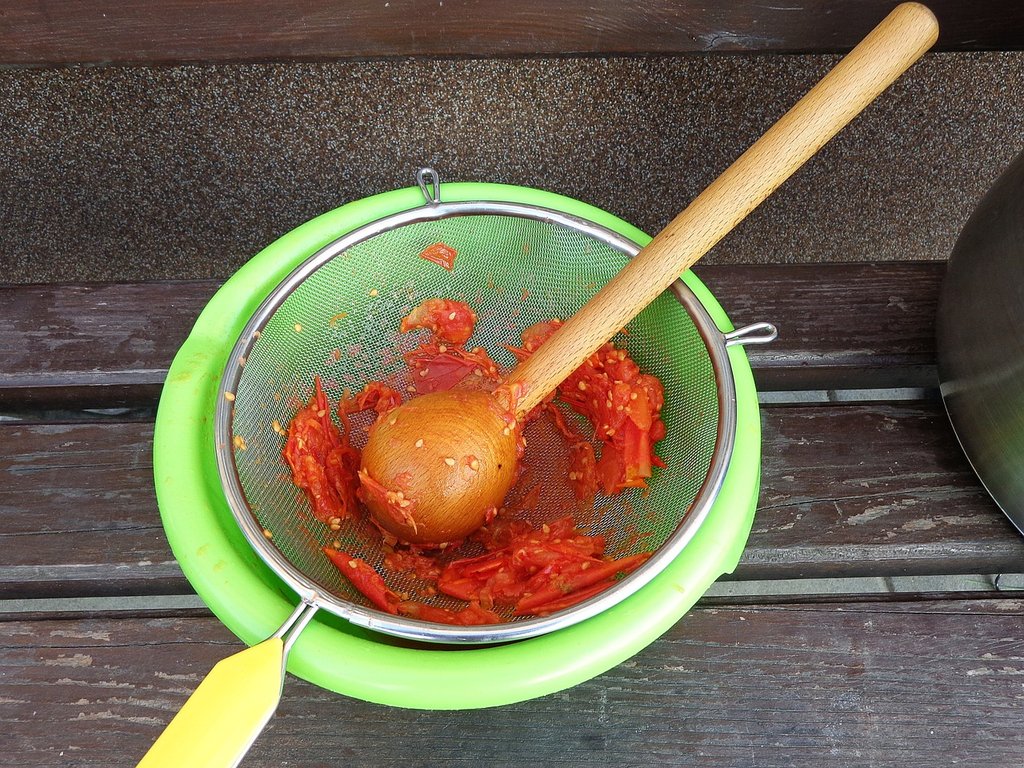Your Cart is Empty
FREE Worldwide Shipping! | +1 365 654 6605
FREE Worldwide Shipping! | +1 365 654 6605
October 17, 2023 4 min read

Are you in need of a versatile kitchen tool that can help you achieve smooth and pureed foods without the hassle of seeds, skins, or stems? Look no further than the food mill and the food strainer. These culinary devices have been used for decades to create delicious sauces, soups, and purees. While they serve a similar purpose, there are distinct differences between the two. In this comprehensive guide, we will explore the features, uses, and benefits of both the food mill and the food strainer. By the end, you'll have a clear understanding of which tool is best suited for your culinary needs. A food mill, also known as a passatutto, purée sieve, moulinette, mouli légumes, or passe-vite, is a kitchen utensil specifically designed for mashing and sieving soft foods. It was first invented in Brussels in 1928 by Victor Simon, and since then, it has become a staple in many kitchens worldwide. The food mill consists of three main parts: a bowl, a bottom plate with perforated holes, and a crank fitted with a bent metal blade. The bowl is used to hold the food, while the bottom plate and crank work together to crush the food and force it through the holes, creating a smooth puree. Using a food mill offers several advantages when it comes to creating smooth and seed-free purees. Here are some key benefits: While a food mill is ideal for achieving smooth purees, a food strainer serves a different purpose in the kitchen. A food strainer, also known as a sieve, tamis, china cap, or chinoise, is primarily used for separating solids from liquids. It consists of a mesh screen attached to a frame, allowing liquid to pass through while capturing larger particles. While the food strainer may not provide the same level of versatility as a food mill, it offers its own set of benefits. Here are some advantages of using a food strainer: Now that we've explored the features and benefits of both the food mill and the food strainer, it's time to determine which tool is best suited for your needs. Consider the following factors when making your decision: Ultimately, the choice between a food mill and a food strainer depends on your specific culinary needs and preferences. Both tools can be valuable additions to your kitchen arsenal, so consider investing in both if you frequently work with a variety of ingredients. In summary, the food mill and the food strainer are essential tools for achieving smooth and pureed foods in the kitchen. While the food mill excels at creating seed-free purees with different textures, the food strainer shines in separating solids from liquids. Consider your specific needs and preferences to determine which tool is the best fit for your culinary adventures. Whether you choose the food mill, the food strainer, or both, these versatile kitchen gadgets will undoubtedly elevate your cooking and baking endeavors. Remember, the key to successful cooking lies in having the right tools at your disposal, so equip yourself with a food mill or a food strainer and unlock a world of culinary possibilities. For more information on food mills and food strainers, check out the following resources:
Understanding the Food Mill
Key Features of a Food Mill
Benefits of Using a Food Mill
Exploring the Food Strainer
Key Features of a Food Strainer
Benefits of Using a Food Strainer
Food Mill vs. Food Strainer: Choosing the Right Tool
Conclusion
References
Be the first to know about upcoming sales and promos. Get a 10% discount coupon when you subscribe!